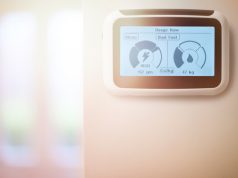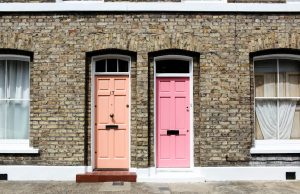A fireplace adds a touch of warmth and charm to any home, but it requires proper care and maintenance to ensure it remains a safe and efficient source of heat. Whether your fireplace is fuelled by wood, gas, or electricity, regular upkeep is essential. Here’s a comprehensive guide with some key tips on how to look after your fireplace effectively.
Establish a Cleaning Routine
Make cleaning your fireplace a regular part of your household maintenance. After each use, remove ashes and debris from the firebox using a fireplace shovel and brush. This simple step helps to prevent the buildup of creosote, a highly flammable substance that can accumulate in the chimney and pose a fire hazard. Additionally, schedule an annual chimney sweep to remove any creosote buildup and ensure proper ventilation.
To explore a wide selection of fireplace options, including accessories and maintenance supplies, visit stonewoods.co.uk.
Thorough Inspection for Damage
Perform regular inspections of your fireplace and chimney to detect any signs of damage or wear. Search for cracks in the masonry, loose bricks or mortar, and evidence of water damage. It’s crucial to promptly address these issues to prevent further deterioration and uphold the safety of your fireplace. Even minor cracks have the potential to compromise the structural integrity of the fireplace, potentially resulting in costly repairs if neglected.
Additionally, be sure to inspect the chimney flue for any obstructions such as bird nests or debris, which can pose a fire hazard or hinder proper ventilation. Check for creosote buildup, a highly flammable substance that can accumulate over time and increase the risk of chimney fires. Regular cleaning of the chimney flue is essential to remove creosote and maintain optimal airflow.
Furthermore, examine the chimney cap or crown for any signs of damage or deterioration. A damaged chimney cap can allow moisture to enter the chimney system, leading to rust, corrosion, and water damage. Repair or replace any damaged chimney caps promptly to prevent further issues.
Install Carbon Monoxide Detectors
Safeguard your household against the potential threat of carbon monoxide by installing detectors near your fireplace and in various locations throughout your home, paying special attention to sleeping areas. Routinely test these detectors to make sure they’re working.
Carbon monoxide, a silent and odourless gas resulting from incomplete combustion in fireplaces, presents a significant health hazard. If you have any concerns regarding a possible leak, evacuate the area promptly and seek professional assistance without delay.
Ensure Adequate Ventilation
Ensuring adequate ventilation is vital to maintain the safe functionality of your fireplace. Keep the chimney free from any obstructions, such as nests or debris, and make sure the damper is fully open whenever the fireplace is in operation. Additionally, contemplate the installation of a chimney cap to shield against rain, wildlife, and debris, thereby preventing potential blockages that may result in hazardous buildup.
Choose High-Quality Fuel
If you have a wood-burning fireplace, opt solely for seasoned hardwoods as your fuel source. Seasoned wood offers improved efficiency during combustion and generates less creosote residue than green or unseasoned alternatives.
Steer clear of burning treated wood or any materials known to emit harmful chemicals when ignited, as they can jeopardise both your health and the integrity of your fireplace.
Avoid burning treated wood or any materials known to emit harmful chemicals when ignited, such as plastics, painted or stained wood, or household garbage. These materials can release toxic fumes when burned, posing health risks to you and your family, and can potentially damage the fireplace and chimney.
Practice Safe Burning Habits
Always follow safe burning practices when using your fireplace. Never leave a fire unattended and use a sturdy fireplace screen to contain sparks and embers. Keep flammable materials, such as curtains, furniture, and decorations, at a safe distance from the fireplace to prevent accidents.
Maintain a Clean Hearth Area
Keep the hearth area clean and free of clutter to reduce fire hazards. Remove any combustible materials and ensure that children and pets are supervised and kept away from the fireplace when it’s in use.
Schedule Professional Inspections
In addition to your own efforts, schedule regular professional inspections and maintenance for your fireplace. Certified chimney sweeps can identify potential issues that may not be visible to the untrained eye and perform necessary repairs or cleaning to ensure the safety and efficiency of your fireplace.
By incorporating these essential tips into your fireplace maintenance routine, you can enjoy the warmth, comfort, and ambiance of your fireplace safely and confidently for years to come. Remember that regular upkeep is key to preserving your fireplace’s functionality and enhancing the overall atmosphere of your home.














